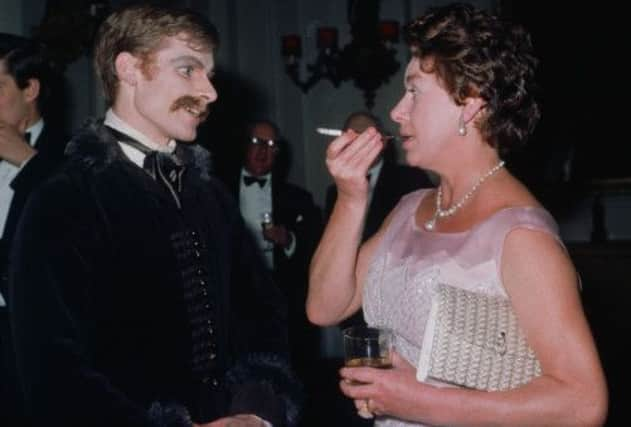Obituary: David Wall CBE, ballet dancer


David Wall was a leading dancer with the Royal Ballet (RB) when it enjoyed a golden age in the 1960s and was acknowledged as one of the great classical companies.
Wall was a principal with the company throughout the days of Margot Fonteyn and Rudolf Nureyev and often danced with the ballerina. Wall had many important roles choreographed on his distinctive style: notably in Dunfemline-born choreographer Sir Kenneth Macmillan’s Mayerling and Manon. Wall’s stylish presence on stage and training at the Royal Ballet School made him an exceptional example of the RB tradition.
Advertisement
Hide AdAdvertisement
Hide AdWall was promoted to principal, aged 20 – the youngest the Royal Ballet had then seen. He was also the youngest soloist to dance Siegfried (Swan Lake) at Covent Garden.
Wall’s connection with Scotland goes back to the days when he suffered a major ligament injury in his early twenties. He had to undergo treatment and did not perform for over a year. During his recuperation he stayed in Perthshire and learnt to shoot and fish. Professionally, Wall visited Scotland with the Sadler’s Wells Company on its annual visits – notably in 1963 when he danced a Cavalier in The Sleeping Beauty.
David Richard Wall took ballroom and ballet lessons as a boy at his school in Windsor and auditioned for the Royal Ballet School when he was ten. He was accepted and in 1963 joined the Sadler’s Wells Royal Ballet, which was the touring arm of the company.
He spent seven years with the company and was made a principal at the age of 20 – the youngest in the history of the company. He performed all the great classical roles and newer works such as Antony Tudor’s Knight Errant and the lead role in Ninette de Valois’ The Rake’s Progress.
In 1968 Wall was promoted to the main company at Covent Garden as a principal and became particularly associated with the ballets of Sir Frederick Ashton (notably La Fille mal gardee and Les Deux Pigeons). He first danced with Margot Fonteyn in Les Sylphides when he was 17 and he became a regular partner.
He recalled that he was terrified but within half an hour we were “laughing and joking”. He said of Fonteyn: “She became an enormous inspiration to me both as an artist and as a person.” They danced together often and Wall delivered a memorable eulogy at Dame Margot’s memorial service in Westminster Abbey.
Wall was also close to Nureyev, who often visited Wall and his wife, the ballerina Alfreda Thorogood, at their home. Wall admitted that it was seeing Nureyev perform at Covent Garden in 1961 that confirmed his desire to be a dancer. “Not so much technically, more his commitment, vitality and understanding,” Wall said. He also partnered such ballerinas as Doreen Wells, Monica Mason, Lynn Seymour, Merle Park and Jennifer Penney.
In 1974 MacMillan unveiled his full-length ballet Manon with Antoinette Sibley and Anthony Dowell as the forlorn lovers. On Wall, Macmillan created the complex, magnificently contrary character of Lescaut. Wall danced the drunk scene in the brothel with a great panache – careful never to descend into caricature but nightly collapsing in a drunken haze to huge applause. It was a role he made very much his own.
Advertisement
Hide AdAdvertisement
Hide AdIt was that understanding of the drama of a character that made a performance by Wall special. His handsome appearance, striking ginger hair (throughout the company he was affectionately known as “Ginger”) and sure technique ensured that he was a most exciting dancer.
“I didn’t want an audience to see David Wall dancing Siegfried,” he once stated. “I wanted them to see Siegfried.”
It was that sense of dramatic intensity that he brought to the greatest challenge of his career. In 1978 Macmillan developed the story of the ill-fated Crown Prince Rudolf into the full length ballet, Mayerling, casting Wall as the drug-obsessed prince.
It was a role that made huge demands on Wall’s technique and his insight into realising the character of the suicidal prince. He admitted that it took him two days to recover from a performance of Mayerling. The role was to define his career and it was one for which he was still much respected.
Wall retired from dancing in 1984 and was, for four years, ballet master at English National Ballet.
In 1995 he worked with remedial ballet students.
David Wall won the Evening Standard Award for Ballet in 1977 and was made a CBE in 1985. He married Alfreda Thorogood in 1967 – they had first met as first year students at the Royal Ballet School – and he is survived by her, and their son and daughter.